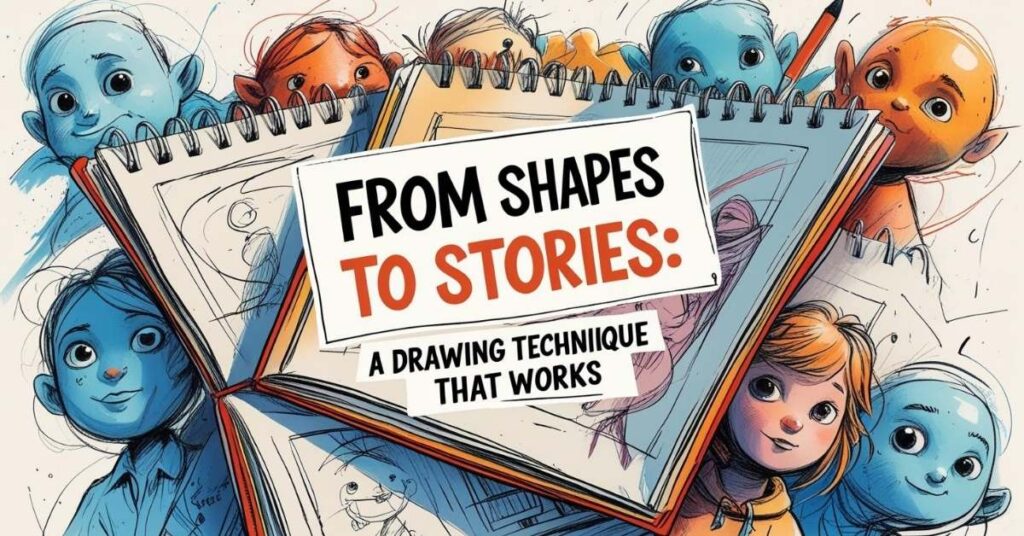Every great drawing starts with something simple—a circle, a square, a triangle. But when you’re new to animation, it’s tempting to skip past all that and dive straight into drawing eyes, arms, or outfits.
Here’s the truth: starting with simple shapes isn’t just a warm-up—it’s a superpower.
If you’ve ever struggled to get a pose to look “right,” or felt stuck redrawing the same scene over and over, shape-based thinking can change the game.
Let’s talk about how drawing with shapes builds clarity, confidence, and storytelling strength—one circle at a time.

The Shape Behind Every Strong Drawing
Most professional animators start every frame by blocking out the underlying shapes. Think of them like the bones of your drawing—if they’re strong, everything else holds together.
Why it works:
- Shapes help you focus on **form**, not detail
- They give your poses **weight, direction, and clarity**
- They free your brain from perfectionism so you can explore
When you draw a character jumping, you’re not just drawing legs—you’re drawing an arc of energy. That energy starts as a stretched oval, or a compressed ball.
That’s why shape-first sketching helps you animate motion that feels alive.
How to Practice Drawing with Shapes
Here’s a super simple warm-up anyone can do:
1. Draw 10 random shapes—circles, ovals, triangles, blobs
2. Turn each one into a character or pose
3. Focus only on silhouette and motion (no details yet)
You can also try gesture drawing using only spheres and tubes. It teaches you how movement flows through the body.
Want inspiration? Check out these free references:

What This Teaches You (Besides Drawing)
When you learn to think in shapes, you’re training your mind to see the structure behind everything.
That’s a big deal in animation, because you’re not just drawing something once—you’re making it move.
Shapes are repeatable. Shapes are transferable.
And most importantly: shapes are forgiving. You can tweak them without fear of messing everything up.
A pose with great shapes reads like a sentence with good grammar. It communicates. It flows.
Final Thoughts
- Don’t skip the shape stage.
- Whether you’re animating a somersault or designing a prop, starting with basic shapes helps you build faster and with more confidence.
- It’s not just a drawing hack—it’s the foundation of storytelling through motion. op, starting with basic shapes helps you build faster and with more confidence.
- It’s not just a drawing hack—it’s the foundation of storytelling through motion.
Sources
- Proko – Gesture Drawing Basics
Excellent breakdown of how shapes and flow create better figure drawing and animation. - Line of Action – Figure Drawing Tool
Free, timed gesture drawing practice with live models and pose references. - Posemaniacs – 3D Pose Reference
A rotating library of figure references rendered in muscle anatomy style.


























